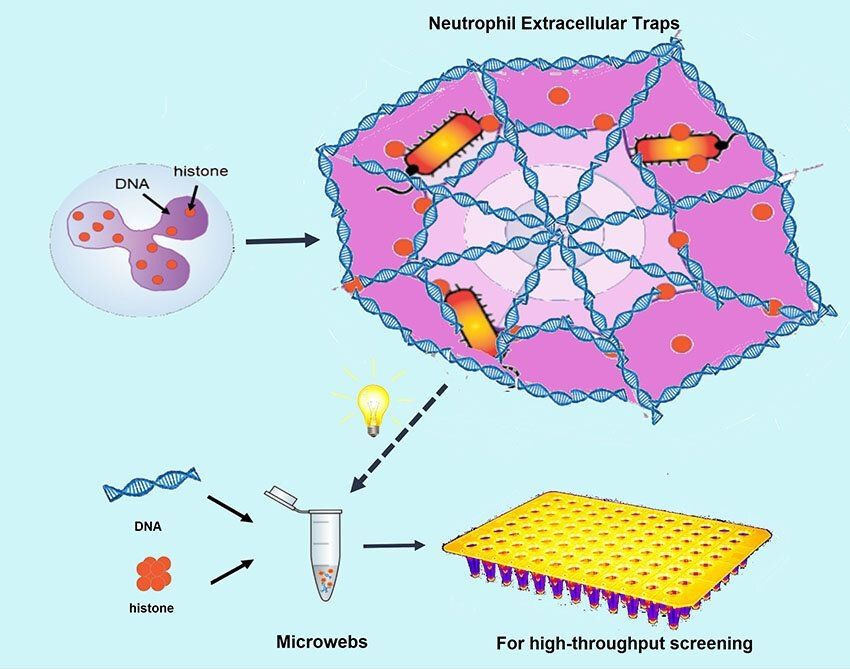Organized by drug name, this comprehensive listing of Neurology FDA Approved Drugs by the Food and Drug Administration features facts on…



A new breed of algorithms has mastered Atari video games 10 times faster than state-of-the-art AI, with a breakthrough approach to problem solving.
Designing AI that can negotiate planning problems, especially those where rewards are not immediately obvious, is one of the most important research challenges in advancing the field.
A famous 2015 study showed Google DeepMind AI learnt to play Atari video games like Video Pinball to human level, but notoriously failed to learn a path to the first key in 1980s video game Montezuma’s Revenge due to the game’s complexity.

Experiencing a bacterial infection? You’re generally prescribed antibiotics by your doctor. But how exactly do those antibiotics and your white blood cells work in tandem to improve your infection?
“The human body’s first line of defense against bacteria are certain white blood cells called neutrophils,” says J. Scott VanEpps, M.D., Ph.D., assistant professor of emergency medicine at Michigan Medicine. “One of their weapons are neutrophil extracellular traps, also called NETs.”
The traps are microscopic networks of fibers made primarily of DNA that are produced by the neutrophils to capture bacteria. But how exactly they work, VanEpps notes, is still unclear.


Click on photo to start video.
Hosted by John Lewis of Oisin. Panel title: “A Therapeutic Revolution Against Aging”.
Aubrey de Grey, Judy Campisi, Nir Barzilai in a panel titled “A Therapeutic Revolution Against Aging”. Hosted by John Lewis of Oisin.
This was an excellent panel! Topics included Yamanaka factors, epigenetic rollback, partial reprogramming and many more. Judy disagreed with Aubrey on the nature of aging, Nir brought up a great point about the secret to rejuvenation lying in uncovering just how a 50-year old egg cell becomes a new rejuvenated baby, and even a paper on Jeanne Calment was mentioned!
Михаил Батин, I even filmed the audience several times — just for you! 😁.

As your body ages, increasing amounts of your cells enter into a state of senescence. Senescent cells do not divide or support the tissues of which they are part; instead, they emit a range of potentially harmful chemical signals that encourage nearby cells to enter the same senescent state.
Their presence causes many problems: they degrade tissue function, increase levels of chronic inflammation, and can even eventually raise the risk of cancer. Today, we will talk about what senescent cells are, how they contribute to age-related diseases, and, perhaps most importantly, what science is hoping to do about the problem.
We’ll be honest, over the years on Translogic we’ve featured a lot of potentially scary tech. Like in many facets of life though, often the things that seem the most frightening actually turn out to be some of the most incredible. On this episode, we’ve hit new heights of both fear and amazement as our host Bucko actually gets to drive a fully functional, bipedal, outrageously badass mech suit. Stop reading. Just watch.

A Dutch company is set to debut the world’s first floating dairy farm near Amsterdam.
A high-tech, multilevel facility will soon be floating in the water in Rotterdam, located roughly 50 miles outside of Amsterdam. Minke van Wingerden, a partner at the property development company Beladon, told Business Insider that the 89-by-89 foot farm will produce an average of 211 gallons of milk each day.
Ending Age-Related Diseases — October 3, 2018.
This is a video from the Ending Age-Related Diseases 2018 conference, which was held earlier this year at the Cooper Union in New York City. The conference was designed to bring the worlds of research and investment together in one place and explore the progress and challenges that the industry faces in developing and funding therapies to end age-related disease.
This was the second panel during the conference and featured Dr. Aubrey de Grey of the SENS Research Foundation, Keith Comito of Lifespan.io, Dr. James Peyer of Apollo Ventures, Dr. Mark Hammond of Deep Science Ventures, Joe Betts Lacroix of Y Combinator and Vium, Dr. Oliver Medvedik of Lifespan.io and The Cooper Union, and Ramphis Castro of ScienceVest.
Life Extension Advocacy Foundation Website — https://www.leafscience.org/